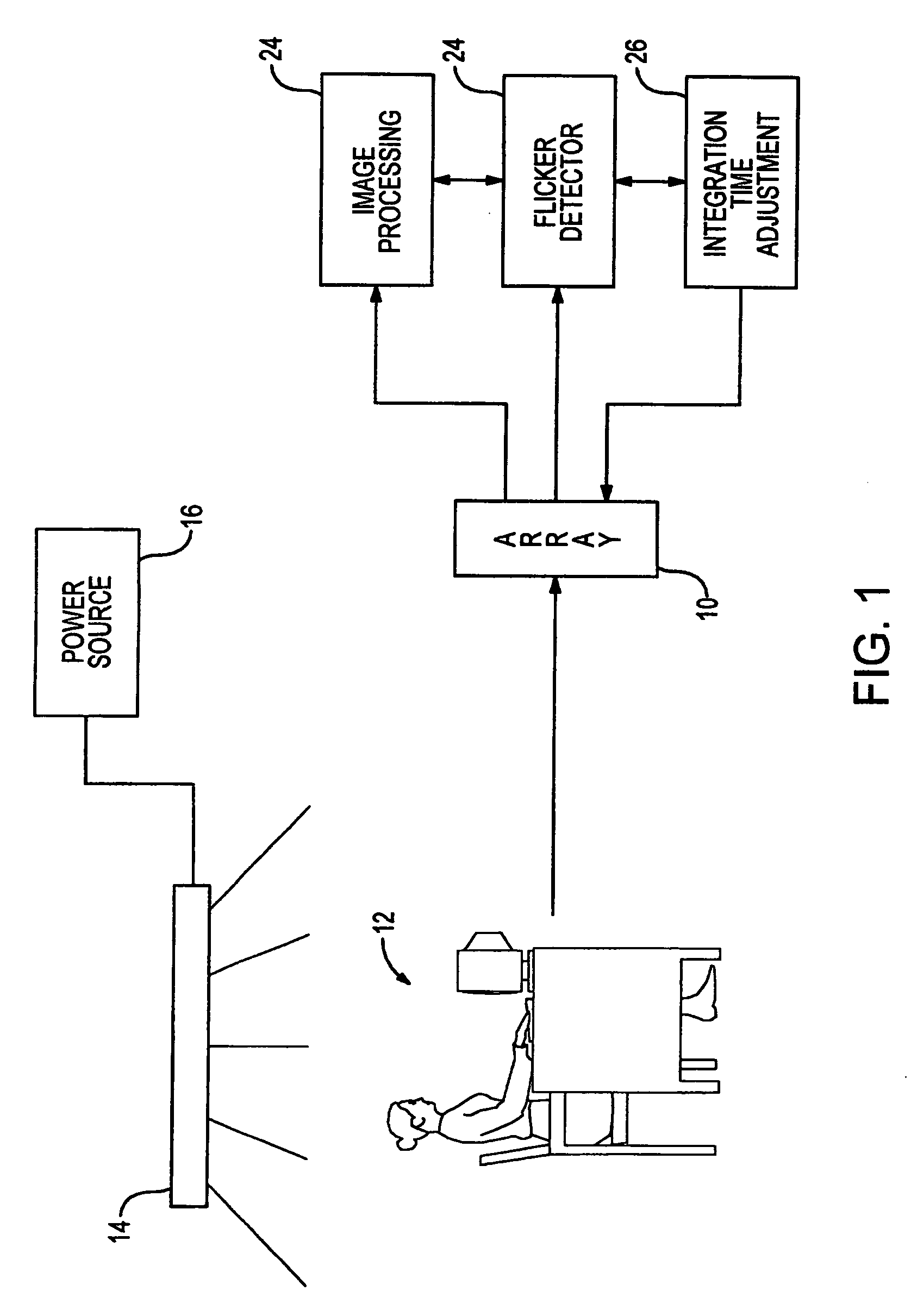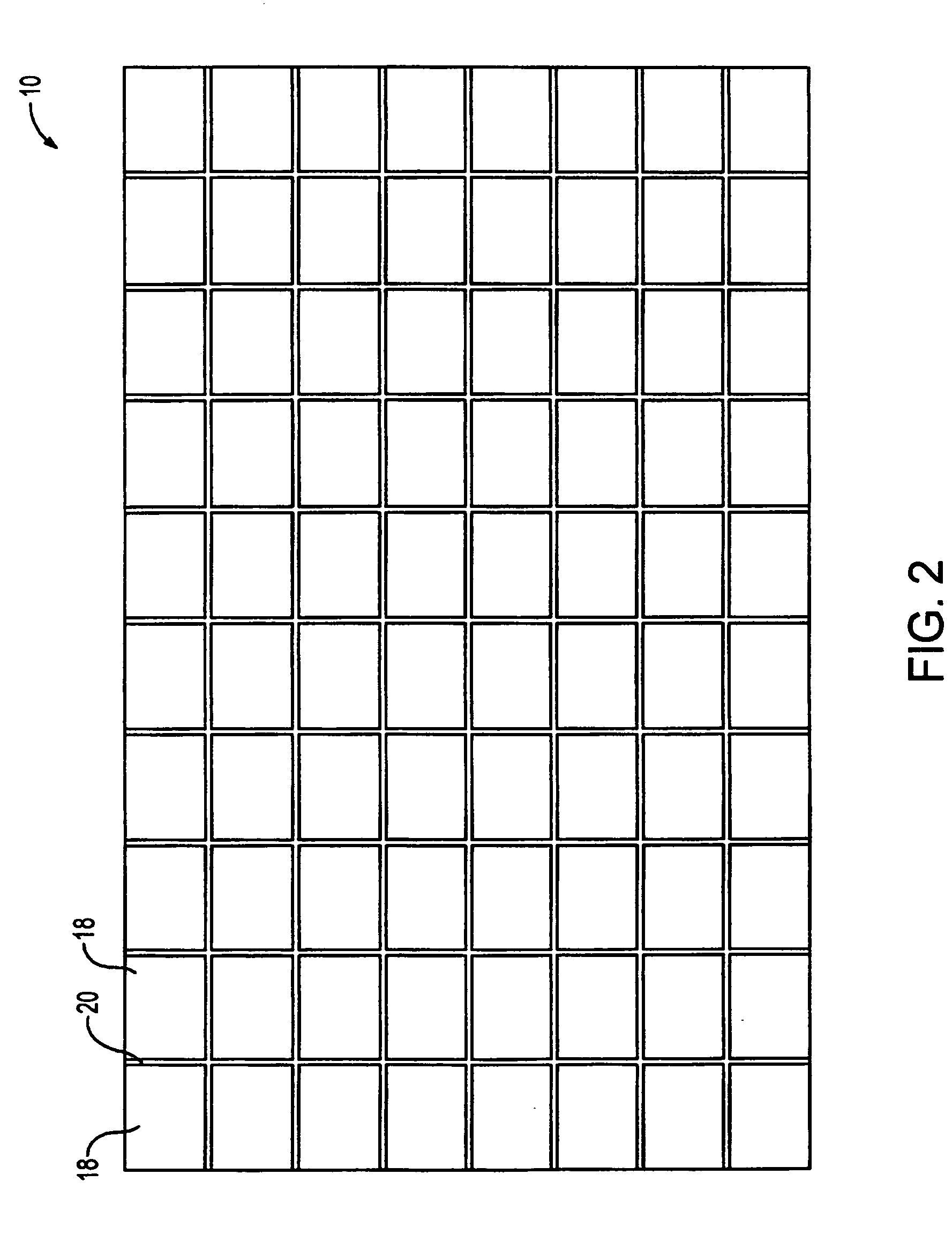Automatic flicker frequency detection device and method
a detection device and flicker technology, applied in the field of automatic flicker detection, can solve the problems of flicker being more difficult to identify within an image with constant unpredictable variations, and achieve the effect of reliably identifying flicker and enhancing detection robustness
- Summary
- Abstract
- Description
- Claims
- Application Information
AI Technical Summary
Benefits of technology
Problems solved by technology
Method used
Image
Examples
Embodiment Construction
[0024] With reference to FIG. 1, a two-dimensional array 10 of sensors is shown as being positioned to generate image information of a scene 12 that includes a person seated at a desk. The scene is shown as being illuminated by a fluorescent lighting system 14 connected to a power source 16. As is known in the art, the lighting system is subject to periodic fluctuations in illumination intensity. For example, if the power source has an output of a 60 Hz waveform, the fluorescent lighting system will have intensity peaks of 120 Hz. On the other hand, if the output of the power source is a 50 Hz waveform, the intensity peaks of the lighting system will be 100 Hz. While the invention will be described with reference to use of a fluorescent lighting system, the techniques may be used with other lighting systems that exhibit periodic intensity variations.
[0025] An example of the two-dimensional array 10 is shown in FIG. 2. The array may be of the type used in commercially available digi...
PUM
 Login to View More
Login to View More Abstract
Description
Claims
Application Information
 Login to View More
Login to View More - R&D
- Intellectual Property
- Life Sciences
- Materials
- Tech Scout
- Unparalleled Data Quality
- Higher Quality Content
- 60% Fewer Hallucinations
Browse by: Latest US Patents, China's latest patents, Technical Efficacy Thesaurus, Application Domain, Technology Topic, Popular Technical Reports.
© 2025 PatSnap. All rights reserved.Legal|Privacy policy|Modern Slavery Act Transparency Statement|Sitemap|About US| Contact US: help@patsnap.com



